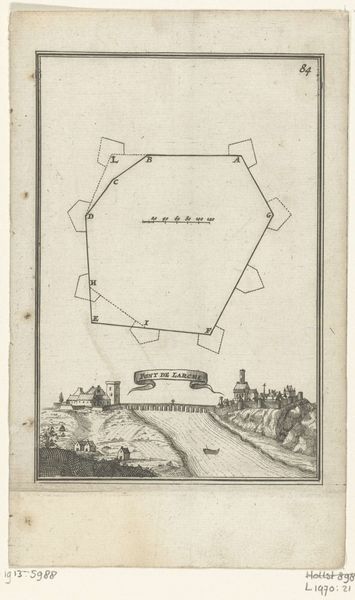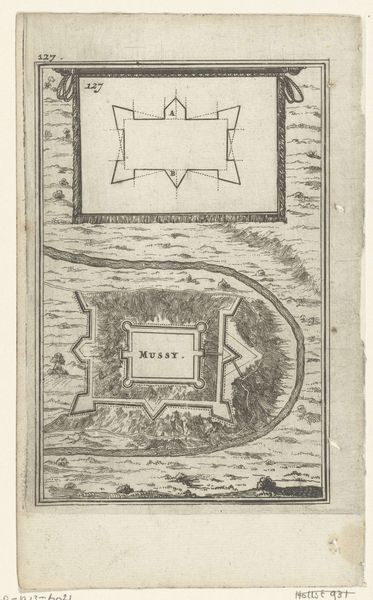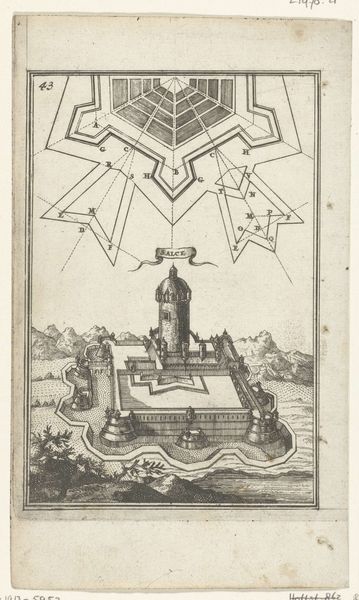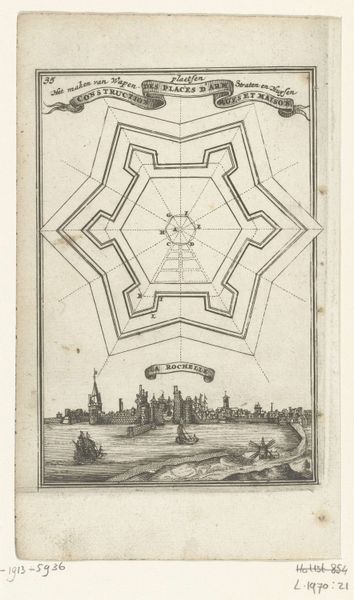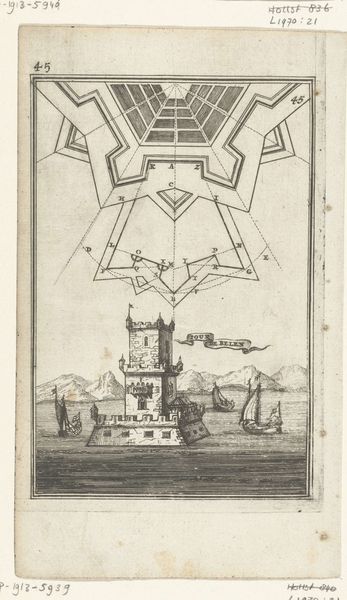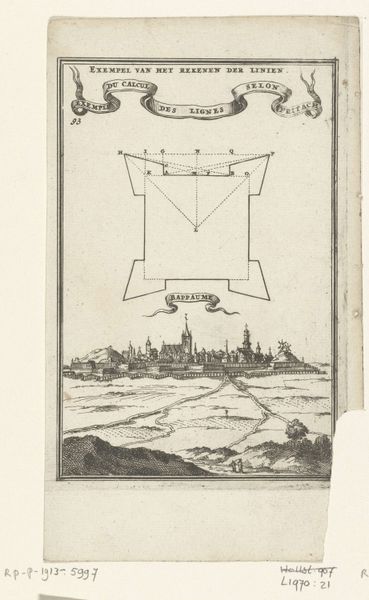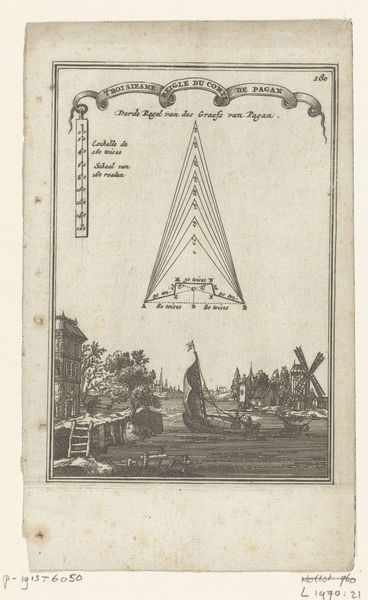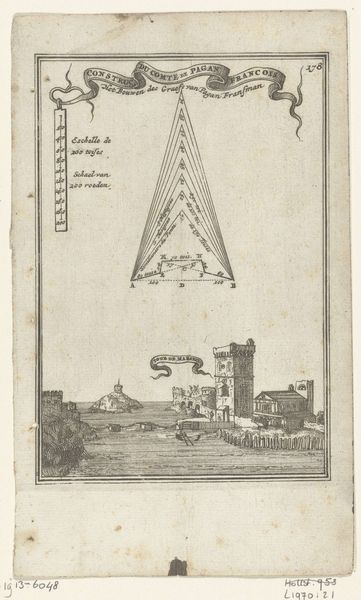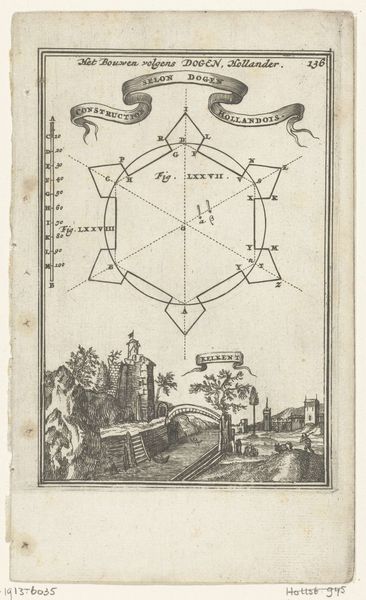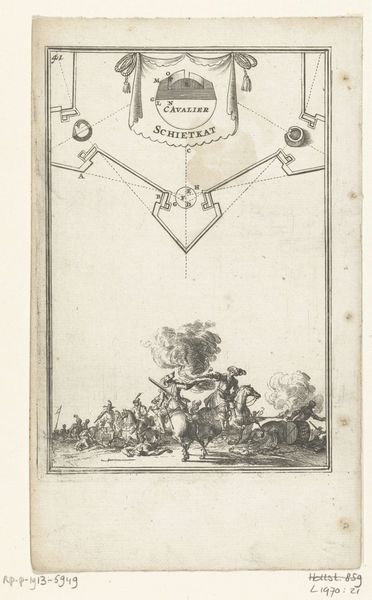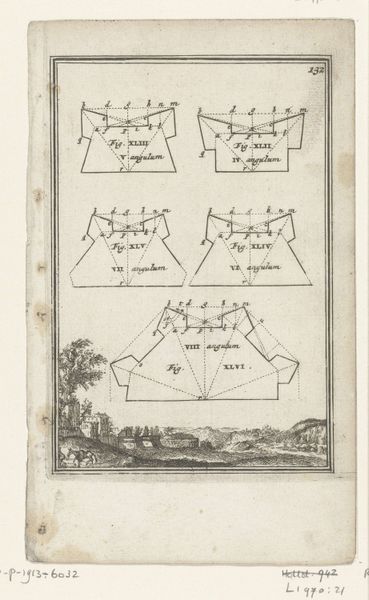
Illustratie voor 'Den Arbeid van Mars' van Allain Manesson Mallet 1672
0:00
0:00
romeyndehooghe
Rijksmuseum
drawing, print, ink, engraving
#
drawing
#
baroque
# print
#
landscape
#
ink
#
geometric
#
line
#
engraving
Dimensions: height 185 mm, width 111 mm
Copyright: Rijks Museum: Open Domain
Editor: So, this is 'Illustration for "The Labour of Mars"' by Romeyn de Hooghe, created in 1672. It's a print, mostly ink and engraving, held here at the Rijksmuseum. Initially, I’m struck by its… almost contradictory nature. It feels both scientific and fantastical. How do you interpret this work? Curator: I see a fascinating convergence of power and vulnerability. The geometric figure at the top – the "Demonstration of Hexagons," as the banner proclaims – speaks to a desire for order, for control over the natural world. It echoes the scientific rationalism gaining prominence at the time. But, look at Tivoli beneath it, in ruins! The past's monuments are falling. What's preserved through geometrical perfection? Editor: That’s a powerful contrast. So, the clean lines and geometry are set against the decaying landscape. It’s about what remains and what's lost? Curator: Precisely! And 'Mars,' associated with war, and ruins evoke the temporality of empires. De Hooghe is reminding us of the ephemerality of human endeavors, despite our grand designs and our ambition to map out and master everything. Even geometry may not overcome time’s decay. Editor: So, is this geometric ideal unattainable or simply transient? Does it even have any use against that strong ruin imagery? Curator: It depends how you see the geometry. Consider it not as control but as an art form with potential, versus actual fortifications that have collapsed in the image! Perhaps de Hooghe implies potential in these designs... and only devastation awaits from Mars' influence? Editor: That's interesting, shifting from destruction to generative capacity. It really changes how I view the relationship between the two halves of the image. Curator: Indeed. Visual symbols carry these weights; to decipher them is to excavate cultural memory. We can ask, in what way did artists contribute to the perpetuation and innovation of those concepts, across history? Editor: I’ll certainly be pondering those questions during my next visit. Thank you.
Comments
No comments
Be the first to comment and join the conversation on the ultimate creative platform.
